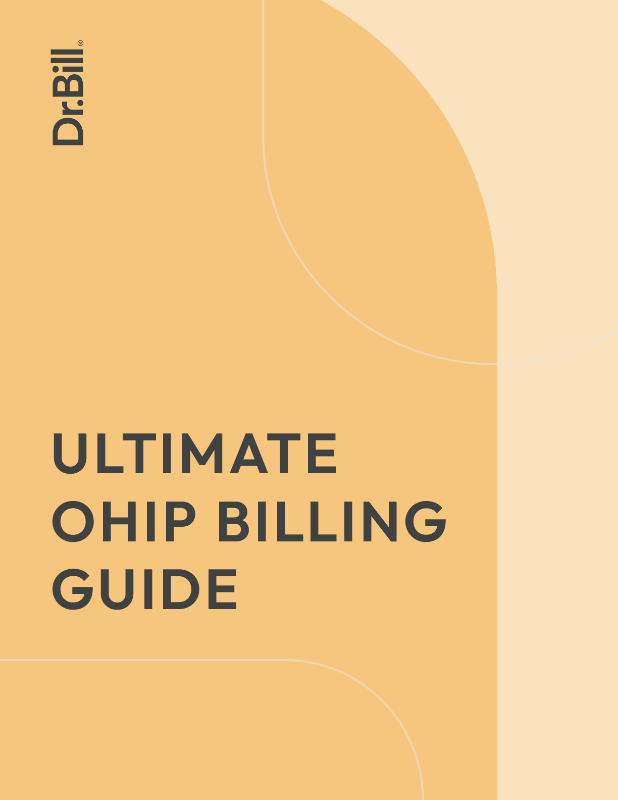In many ways, surgical billing is the most complex out of all medical specialties. Not only do you need to contend with billing for consultations, assessments, special visits, and the premiums associated with billing them, you’ll also need to boil down each complex surgical procedure you do into the proper diagnostic codes. And unlike other medical specializations who will bill for many procedures over the course of a day, surgeons typically bill fewer procedures in higher amounts, which means that a claim rejection or refusal will have a much larger impact on your bottom line.
If this sounds overwhelming, don’t worry! Whether you’re a new surgeon or a veteran of the OR, mistakes happen – and the best way to avoid them is to learn from other doctors. Here are a few of the most common billing mistakes surgeons in Canada make, and the best ways to avoid them:
1. Choosing the Wrong Diagnostic Code
OHIP billing rules side with the specific, so using a code that is too general for the procedure could lead to a rejection or a refusal. Surgical codes especially are highly specific to the procedure, equipment, or part of the body being operated on – and since there are more possibilities for surgical needs than billing codes could possibly account for, there are going to be some grey areas. For example, there is no fee code for billing a Spigelian hernia in the OHIP schedule of benefits, so the Ontario Association of General Surgeons suggests billing for an inguinal hernia, which is the most similar in nature and procedure.
These specifics might seem daunting if you’re just starting out (and even if you’ve been in practice for a while) so it’s a good idea to ask questions and rely on guidance from other surgeons, staff, or government bodies as you learn. The OAGS Tariff Committee runs an online billing corner with a submission form option available and some common billing queries, which can help you with some of your stickier questions. Cases, where the billing code isn’t as clear as you’d like it to be, can be confusing, but making sure you have a solid staff framework – who can consult the correct governance bodies (like the OAGS) or ask billing experts (like Dr.Bill) and ask questions can save you a lot of time.
2. Lumps and Bumps
One commonly discussed area of surgical billing is whether or not surgeons should bill OHIP for the removal of ‘lumps and bumps’ like moles, keratosis, haemangioma, or warts. If the procedure is purely cosmetic, OHIP will not cover the surgery, and you should refer the patient to a plastic surgeon or bill them out of pocket. However, if there is a reason to remove the benign lesion (for example, if cancer is initially suspected or if the lesion is particularly large or disfiguring) then OHIP does have a billing code available, which you should be using.
Some doctors argue that these ‘lumps and bumps’ procedures should be billed to the patient (especially since the value of the billing is often low); however, if there is a reasonable explanation to bill OHIP for the service, you should do so – billing patients privately when there is an OHIP code available is generally frowned upon and should be avoided to remain in good standing.
3. Missing or Incorrect Patient Information
Whether you’re billing for a pre-surgical consultation or you’re spending significant time in the operating room, it’s doubly important to make sure all of your patient details are correct. Since surgical procedures are usually of higher value, delays from OHIP refusals or rejections could have a big impact on your income for the month, so the more simple mistakes you can avoid, the better. Things to look out for include:
Not adding a referring physician: all consultations require a referring physician attached to be considered valid. Make sure you’re using the physician’s correct 6 digit OHIP billing number.
Incorrectly inputting patient birth date or health care card number: patient data that does not match what OHIP has on file will lead to your claim being rejected. Make sure to double-check any data inputted manually or use a device to scan patient data (such as LabelSnap on Dr.Bill) instead.
Not meeting code requirements: some services have minimum or maximum time limits or other requirements (such as general anesthesia). Trying to bill for a code without these requirements – for example, billing an 8-minute service when the code minimum is 15 – will lead to a rejection or refusal of your claim.
Not checking if the patient is insured: out-of-province patients can be billed through OHIP, but uninsured patients will need to be billed privately – and it’s important to know this before you put through the claim.
Forgetting to add the patient’s admission date: all inpatient consultations will require a hospital admission date, and this date should match the one on the admission assessment. Forgetting this could lead to your claim being rejected or refused.
All of these mistakes take very little time to fix but can make a big difference as to whether your claim gets processed quickly or is delayed due to errors.
4. Double Billing
OHIP won’t allow two doctors to bill for the exact same code on the same patient, and this is also true for surgeries where more than one physician is in attendance. When two surgeons are working on a procedure at the same time, one of the surgeons should bill for the procedure (for example, a gastrostomy, S118) and the assisting surgeon should bill for the time units, using an assist code with suffix ‘B’ (S118B). The assisting physician cannot bill for assessment codes like A034 (partial assessment) as the assist codes already include the time spent on assessment. Doing so would constitute double billing, which is not allowed under OHIP rules.
5. Data Mistakes
Data input mistakes, like the ones above, are easy to avoid, but they’re also easy to make in a busy office setting, and when you add in the additional complexities of surgery – for example, following up on questions with the tariff committee or with OHIP over a denied claim – it’s all too easy to miss things or leave money on the table. Make sure you know what you’re billing, what is coming back (which can be reviewed in your monthly remittance reports) and what needs to be done in the future to ensure a smoother process. If you want to be in control of your billing but don’t want to waste time following up on rejections make sure you use a billing software with billing support (who generally just fix your mistakes automatically for you).
While the surgical billing process can seem daunting at first, you are not alone! From the surgeons who work in your practice to your billing team, there is always somewhere to go to ask questions. And when it comes to using the surgical fee codes, taking the extra time to double-check what you’re billing before you submit can help you not only learn to bill faster in the future, but also make it easier for you to get paid on time.
This article offers general information only and is not intended as legal, financial or other professional advice. A professional advisor should be consulted regarding your specific situation. While information presented is believed to be factual and current, its accuracy is not guaranteed and it should not be regarded as a complete analysis of the subjects discussed. All expressions of opinion reflect the judgment of the author(s) as of the date of publication and are subject to change. No endorsement of any third parties or their advice, opinions, information, products or services is expressly given or implied by RBC Ventures Inc. or its affiliates.








